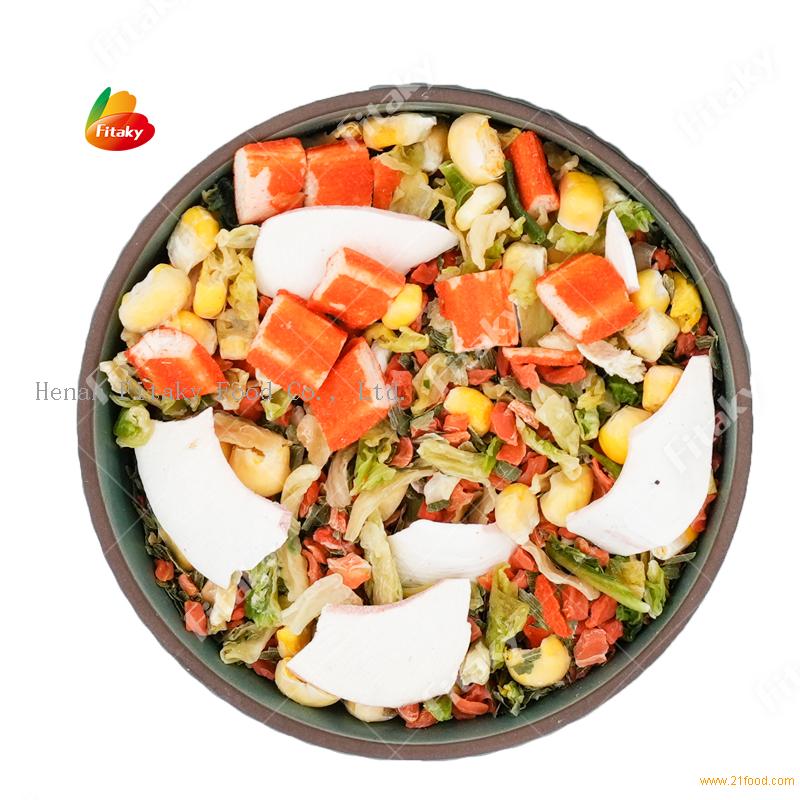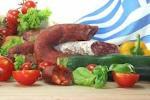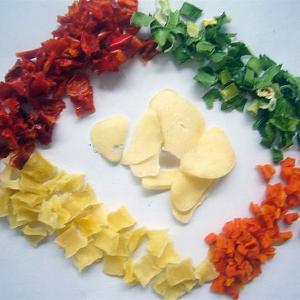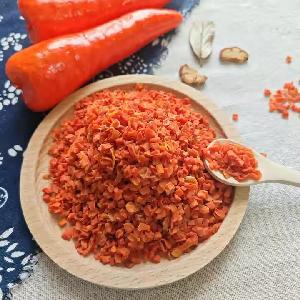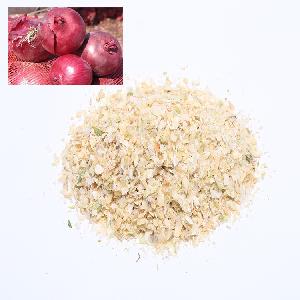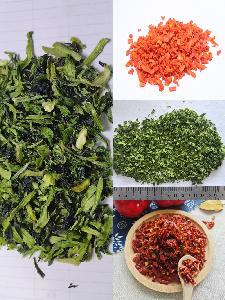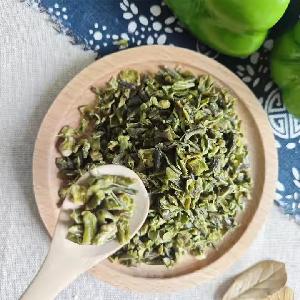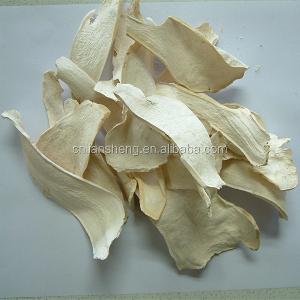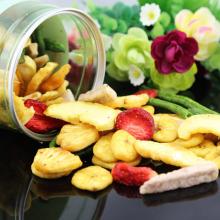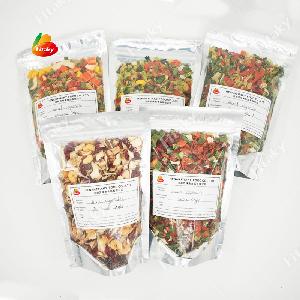Fitaky dried vegetable typically contains a variety of vegetables that have been dehydrated to remove their moisture content, making them lightweight, compact, and with an extended shelf life.
Recipe Reference
| Style |
Recipe Reference |
| Chinese style |
Dehydrated diced carrot, cabbage, spring onion, green stalks, wolfberry, sesame |
| Chinese style |
Dehydrated diced carrots, cabbage, shallots, green stalks, freeze-dried corn kernels, egg cubes |
| Korean style |
Dehydrated kimchi, dehydrated carrots, shallots, chili rings |
| Japanese style |
Dehydrated cabbage, diced eggs, dehydrated shallots, diced dehydrated carrots, dehydrated squid slices, dehydrated fish imitation crab sticks |
| Thai Style |
shiitake mushrooms slices, chili rings, shrimp, seaweed slices |
| Basic raw materials |
Dehydrated diced carrots, cabbage, green onions, green vegetables (green stalks, evergreens, etc.), pepper rings, freeze-dried corn kernels, egg granules, dried bacteria (mushroom slices, |
| Extension |
Dehydrated celery, parsley, broccoli, soy products (bean sticks, bean skin, freeze-dried tofu), wolfberry, sesame, peanuts, freeze-dried meat products (chicken cubes, beef cubes), freeze-dried seafood products (shrimp , squid, crab sticks) |
|
These vegetable are often used for:
1. Emergency Food Storage: Dried vegetables are popular in emergency preparedness kits as they require no refrigeration and can last for years when stored properly. They provide essential vitamins and minerals during situations where fresh produce may not be available.
2. Camping and Backpacking: Lightweight and easy to pack, these packets are ideal for campers and hikers who need nutritious, quick-cooking meals on the trail. Simply add hot water to rehydrate and integrate into soups, stews, or as a side dish.
3. Convenience Cooking: At home, dried vegetables can be a convenient ingredient for busy cooks, saving prep time by eliminating the need to chop or clean fresh produce. They quickly rehydrate for use in recipes like casseroles, stir-fries, and pasta dishes.
4. Space-Saving Storage: Dried vegetables take up significantly less space than their fresh counterparts, making them practical for small kitchens, RVs, or boats.Typical contents of a dried vegetable packet might include carrots, peas, corn, green beans, onions, bell peppers, and more.
To prepare, simply soak the vegetables in water for a specified period (usually around 10-20 minutes) until they regain their soft texture, then use them as you would fresh vegetables in your cooking.
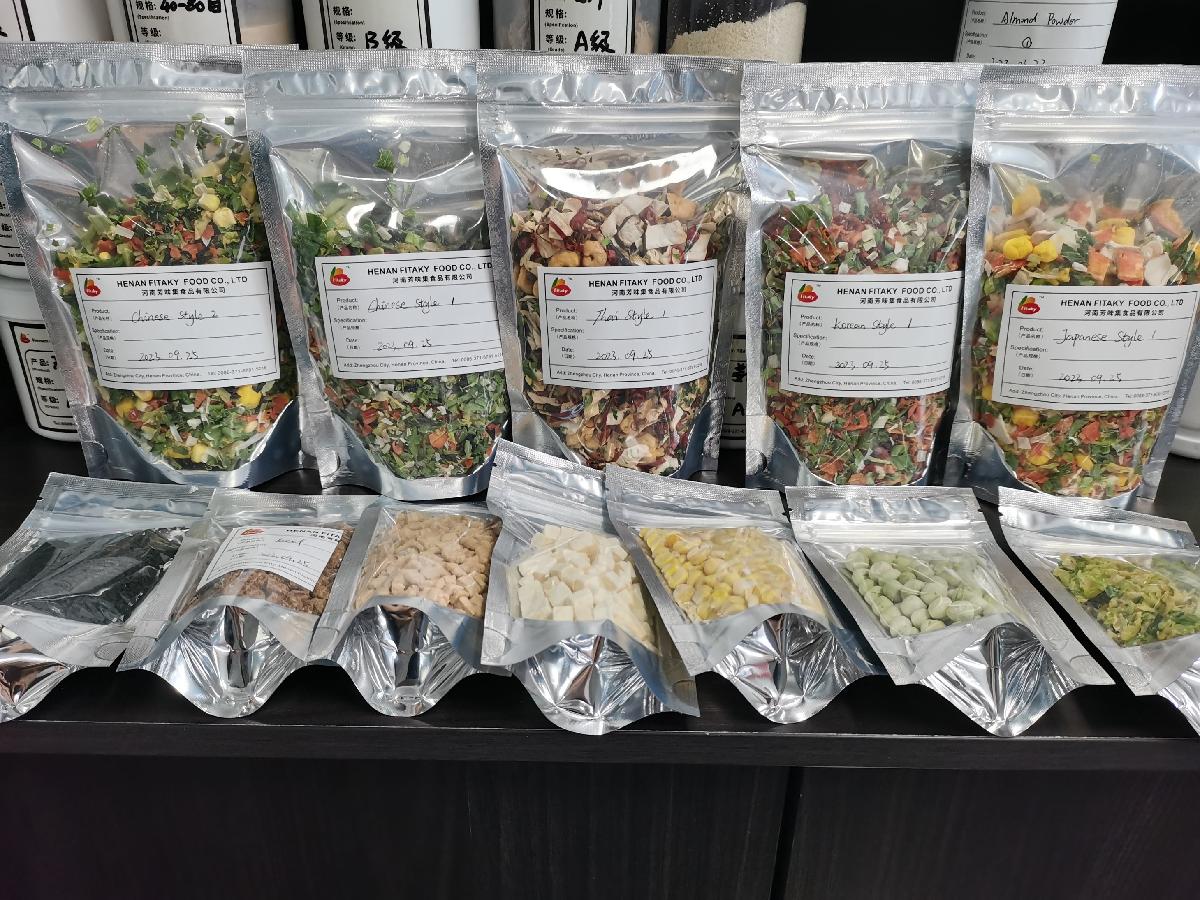
- Free sample: Available dehydrated vegetable recipe.
- Demand customization: Customize or develop new vegetable package recipes according to customer needs.
- Multiple certification: Our various dehydrated vegetables have passed ISO9001, HACCP, HALAL, BRC, FDA, ORGANIC, KOSHER and other certifications.
- Service and transportation: We have a mature logistics and transportation system and good service to ensure safe and fast delivery of goods!
